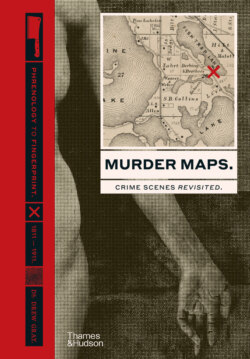Читать книгу Murder Maps - Drew Gray - Страница 14
На сайте Литреса книга снята с продажи.
Оглавление13
detection in the minds of the British public, who previously had perceived plain-clothed police as spies.
Locard’s work was taken up and developed by French criminologist Dr Jean Alexandre Eugène Lacassagne (1843–1924), head of the Department of Legal Medicine at the University of Lyon, and a close friend of the Parisian forensic specialist. Lacassagne devised a system for matching a bullet found at a crime scene to the gun that fired it, and was able to calculate the length of time a body had been putrefying, enabling detectives to determine time of death more accurately. In 1886, he founded the journal Archives danthropologie criminelle, which showcased innovations in criminal investigation from around the world. By dissecting the bodies of victims of murder
and those supposed to have died of ‘natural causes’, Lacassagne was able to solve a number of murder cases and eventually to enable the conviction of French serial killer Joseph Vacher (1869–98).
Since the 1820s, it had been clear that fingerprints provided a unique reference point of identification. Sir William Herschel (1833–1917), while working as a civil servant in India, started putting fingerprints on contracts in the 1850s to prevent fraud. In the 1870s, while working in a hospital in Japan, Dr Henry Faulds (1843–1930) became convinced that each person’s fingerprints were unique and succeeded in exonerating an assumed criminal on the basis that his fingerprints differed from those discovered at the scene of the crime. He contacted Charles Darwin to ask him to help him work on his ideas but Darwin declined, passing his ideas on to Francis Galton (1822–1911). In 1880, Faulds published a paper on fingerprint identification in the magazine Nature, and in 1886 offered his ideas to the police in London, who promptly dismissed them. The Met were using Bertillon’s system and did not see the need to introduce fingerprinting. In 1888, Galton submitted a Royal Institution paper on fingerprint patterns without crediting Faulds, and in 1892 his book
18951895189518961896189718991901
Eduard Piotrowski publishes an important paper on blood spatter analysis.
Child psychologist Wilhelm Preyer proposes that handwriting is actually ‘brainwriting’.
Wilhelm His Sr produces the first ever facial reconstruction.
Handwriting expert Thomas H. Gurrin testifies at the trial
of Adolf Beck.
Police use microscopic analysis of wrapping paper to locate child murderer Amelia Dyer. A Fingerprint Bureau is
established in Kolkata, India.
The first organized police dog programme is introduced in Ghent, Belgium.
Karl Landsteiner discovers the ABO system of human blood types.
F.
E.
D.
SENSATIONALIZED MURDER & THE RISE OF THE DETECTIVE.
